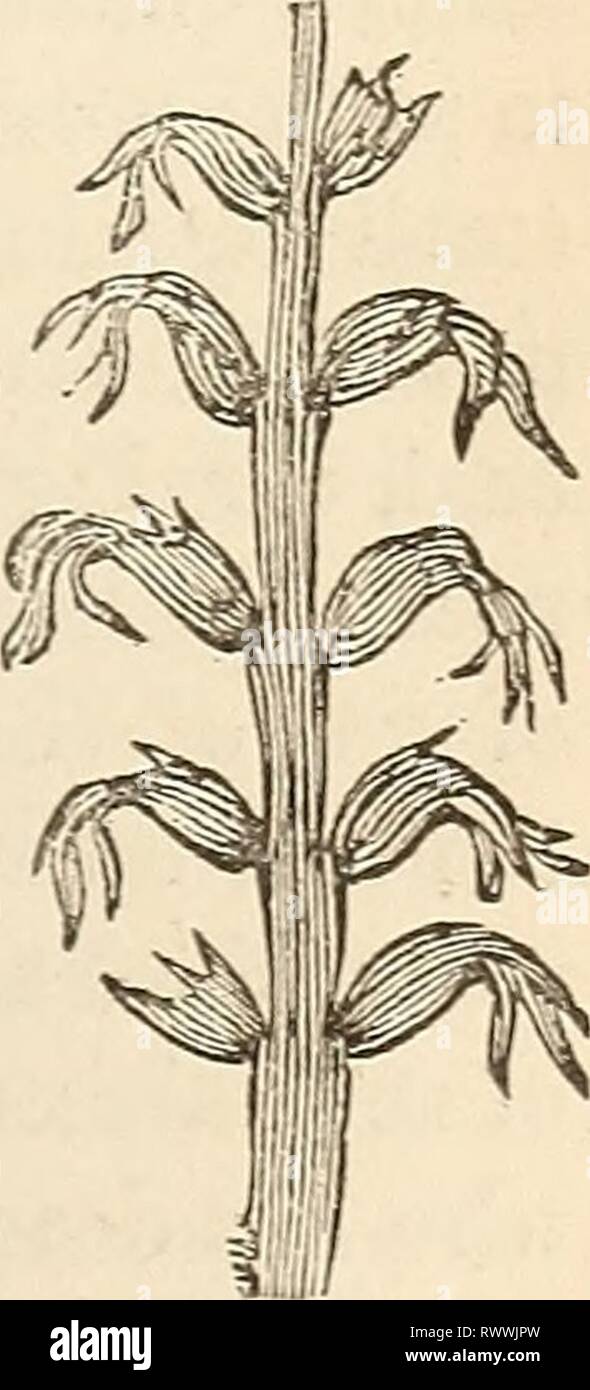Elements of geology, or, The Elements of geology, or, The ancient changes of the earth and its inhabitants as illustrated by geological monuments elementsofgeolog00lyel Year: 1868 Ch. XXiY.l ANGIOSPERMS—COAL, HOW FORMED. 479 Although our data are confessedly too defective to entitle us to generalize respecting the entire vegetable creation of this era, yet we may affirm that so for as it is known it differed widely from any flora now existing. The comparative rarity of Monocotyledons and of Dico- tyledonous Angiosperms seems clear, and the abundance of Ferns and Lycopods may justify Adolphe B

Image details
Contributor:
Bookworm / Alamy Stock PhotoImage ID:
RWWJPWFile size:
5.7 MB (180.5 KB Compressed download)Releases:
Model - no | Property - noDo I need a release?Dimensions:
953 x 2099 px | 16.1 x 35.5 cm | 6.4 x 14 inches | 150dpiMore information:
This image is a public domain image, which means either that copyright has expired in the image or the copyright holder has waived their copyright. Alamy charges you a fee for access to the high resolution copy of the image.
This image could have imperfections as it’s either historical or reportage.
Elements of geology, or, The Elements of geology, or, The ancient changes of the earth and its inhabitants as illustrated by geological monuments elementsofgeolog00lyel Year: 1868 Ch. XXiY.l ANGIOSPERMS—COAL, HOW FORMED. 479 Although our data are confessedly too defective to entitle us to generalize respecting the entire vegetable creation of this era, yet we may affirm that so for as it is known it differed widely from any flora now existing. The comparative rarity of Monocotyledons and of Dico- tyledonous Angiosperms seems clear, and the abundance of Ferns and Lycopods may justify Adolphe Brongniart in calling the primary periods the age of Acrogens * (' le regne des Acrogens '). As to the Sigiilariaa and Calamites, they seem to have been distinct from all tribes of now-existing plants. That the abundance of ferns implies a moist atmosphere, is admitted by all botanists; but no safe conclusion, says Hooker, can be drawn from the Coniferse alone, as they are found in hot and dry and in cold and dry climates, in hot and moist and in c )ld and moist regions. In ISTew Zealand the Coniferse attain their maximum in numbers, constituting -Jgd part of all the flowering plants; whereas in a wide district around the Cape of Good Hope they do not form 1 *0 0th of the phenogamic flora. Besides the conifers, many species of ferns flourish in New Zealand, some of them arborescent, together with many lycopodiums; so that a forest in that country may make a nearer approach to the carboniferous vegetation than any other now existing on the globe. mperms.—Some of the grass-like leaves termed Fig. 535. PoaciteSj having fine longitudinal stria?, are conjec- tured to belong to Monocotyledons; but the deter- mination is doubtful, as some of them may be the leaves of Lepidodendra, others the stems of Ferns. The curious plants called Antholithes by Lindley have usually been considered to be flower-spikes, having what seems a calyx and linear petals (see fig. 535). Dr. Hooker suggest